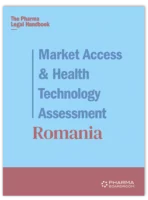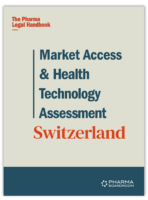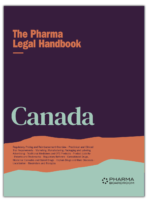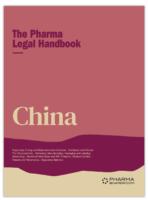Localization
Fasken / Canada
Want to know more about the localization in Canada? Read on! Prepared in association with Fasken, a leading global law firm, this is an extract from The Pharma Legal Handbook: Canada, available to purchase here for GBP 119.
1. Are there any rules or regulations requiring and/or encouraging localization in your country? What is the legal framework defining these localization rules and policies?
As of November, 2021, drugs intended for the Canadian market that could cause or exacerbate a shortage are prohibited from being distributed outside of Canada. There are also related reporting obligations on drug and device manufactrers where shortages are anticipated.
In addition, all drugs imported into Canada must be imported into a Health Canada licensed establishment. This means that non-resident importers may have more difficulty importing without a local partner or establishment.
2. Have there been any recent significant changes involving localization rules? If yes, when did they take place and what did they involve?
Chapter 10, Question 1: Are there any rules or regulations requiring and/or encouraging localization in your country? Amendments to the Food and Drug Regulations and Medical Devices Regulations to address the shortage of drugs and medical devices in Canada were made in September 2021.
3. Is the process of obtaining a marketing authorization impacted by localization policies in your country? If yes, how so (what are the incentives received or the requirements)?
No, the process of obtaining a market authorization is not impacted by localization policies in Canada.
4. Is the pricing process for pharmaceutical products impacted by localization policies in your country? If yes, how so (what are the incentives received or the requirements)?
The pricing process for pharmaceutical products is not impacted by localization policies in Canada.
5. Is the reimbursement of pharmaceutical products impacted by localization policies in your country? If yes, how so (what are the incentives received or the requirements)?
The reimbursement of pharmaceutical products is not impacted by localization policies in Canada.
6. Is the access to public or public tenders of pharmaceutical products impacted by localization policies in your country? If yes, how so (what are the incentives received or the requirements)?
The public tenders of pharmaceutical products may be impacted by localization policies at the provincial level. For instance, certain provinces have policies that require procurement from local suppliers, to the extent compatible with Canada’s obligations under its international trade agreements.
A particular example is the province of Quebec which requires that a supplier to have a permanent place of business in Quebec or a territory covered by a trade agreement.[1]
In this context, the province of Quebec is party to a number of intergovernmental agreements. These agreements provide that procuring entities will treat goods, services and suppliers in the same manner as domestic goods, services and suppliers. The emphasis is on allowing for open competition and free trade.
Therefore, above certain Contract value thresholds, public bodies cannot discriminate against a supplier that is based in a province, state or country with which the Government of Quebec has signed one of these agreements.
Nevertheless, not all of Quebec’s intergovernmental agreements are applicable to all types of tenders, e.g. some only applies to certain public bodies and so may exclude hospital group purchasing organizations. In addition, intergovernmental agreements can also be subject to certain thresholds. For instance, certain public contracts may not be accessible to European countries bound by the Comprehensive Economic and Trade Agreement, Canada and The European Union (“CETA”) and may remain accessible to other Canadian provinces because the market threshold differs and is higher under CETA than it is under interprovincial agreements.[2]
Accordingly, in some cases, localization policies can impact public tenders of pharmaceutical products.
[1] See, Regulation respecting certain supply contracts of public bodies, CQLR c C-65.1, r 2, s. 6(2).
[2] As an example, a Quebec call for tenders above $100,000 should normally allow for tenderers established in any Canadian province, but not European countries. For countries bound by CETA, the current threshold is $340,600. See, the Comprehensive Economic and Trade Agreement, Canada and The European Union, 21 September 2017, at s 19-2 & 19-3 (Of Provisional Application as of 21 September 2017) [CETA] online: https://www.international.gc.ca/trade-commerce/trade-agreements-accords-commerciaux/agr-acc/ceta-aecg/text-texte/toc-tdm.aspx?lang=eng.
7. Are import tariffs, importation and/or exportation permits, trade and/or taxation of pharmaceutical products impacted by localization policies in your country ? If yes, how so?
Tariffs: Canada’s import tariffs are not influenced by localization policies. With some rare exceptions, pharmaceuticals that are classified in Chapter 30 of the Harmonized Commodity Description and Coding System, may be imported into Canada on a duty free basis. In addition, most of the raw materials used to manufacture pharmaceuticals may also be imported on a duty free basis.
Furthermore, Canada has free trade agreements with virtually all of its major trading partners, and these agreements have eliminated importation tariffs on qualifying products, or seek to eliminate them within a number of years. Canada is also a member of the WTO. All goods imported from WTO member countries receive standard most favoured nation (MFN) tariff rates regardless of whether they have an establishment in Canada or not.
Import and Export Permits: Import and export permits are not subject to localization policies, except to the extent that importers are subject to local safety, quality, and labelling standards to enter the Canadian market. This may encourage corporations to develop a local presence, enter into local partnerships, or obtain local expertise.
Under its international trade obligations as a WTO member, Canada is not permitted to treat products imported into Canada differently than those manufactured locally, once they are imported from member state countries.
Taxation: Scientific research and experimental development tax credits offered in Canada by the federal and provincial governments are impacted by localization policies. Tax credits claimed by Canadian-controlled private corporations (i.e., corporations that are not controlled by one or more non-residents or public corporations) are generally refundable and available at enhanced rates.
In addition, various provincial governments offer investment and other income tax credits in respect of manufacturing and processing operations carried on in the provinces.
8. Are there any other incentives or advantages offered by the current local localization rules in your country? If yes, what are they?
Provincial and federal levels of government will often offer subsidies to local pharmaceutical corporations.
At the federal level the “Strategic Innovation Fund” provides broad grant and loan opportunities for corporations, including pharmaceutical and other health and biosciences corporations.[1]
Most provinces and territories have a general commercial development fund or an innovation fund under which pharmaceutical companies may apply for government grants or loans for the purpose of starting, or expanding their operations within a province.[2]
[1] Canada, Innovation, Science and Economic Development Canada, Overview of announced projects Strategic Innovation Fund, (4 July 2019) online: https://www.ic.gc.ca/eic/site/125.nsf/eng/00022.html; Canada, FedDev Ontario Business Scale-up and Productivity (BSP) Program (2019) online: https://www.feddevontario.gc.ca/eic/site/723.nsf/eng/h_00122.html?OpenDocument
[2] For example, British Columbia, innovate BC, (2018) online: https://innovatebc.ca/what-we-offer/get-funding/; Ontario, Government grants, loans, tax credits and support services for Ontario businesses, (26 June 2019) online: https://www.investinontario.com/incentive-programs-and-services; Manitoba, Province Launches Innovation Growth Program, Delivers Funding to Economic Development Partners, (6 June 2019) online: https://news.gov.mb.ca/news/index.html?item=45347; New Brunswick, Northern New Brunswick Economic Development and Innovation Fund, (date accessed: 10 July 2019) online: https://www2.gnb.ca/content/gnb/en/departments/regional_development/services/services_renderer.201252.Northern_New_Brunswick_Economic_Development_and_Innovation_Fund.html.
9. Are there discussions about the possibility of implementing localization policies in your country? If yes, what are the proposed reforms and when should they come into place?
The amendments to the Food and Drug Regulations and Medical Devices Regulations to address the shortage of drugs and medical devices in Canada made in September 2021 may be viewed as a response to U.S. efforts to import Canadian drugs to help reduce U.S. drugs costs.
On July 2020, the Trump administration announced the Safe Importation Action Plan. This plan allows U.S. states, wholesalers, pharmacists and drug manufacturers to import prescription drugs from a licensed wholesaler in Canada under specified conditions. Nevertheless, the Biden administration announced in May 2021, that they were not in a rush to allow states to import drugs from Canada, there are several issues to consider before authorizing an importation plan.
In addition, several states, including notably Vermont, Florida and Colorado have passed legislation that would allow drugs to be imported from Canada; at least for government-run programs such as Medicaid. Several other states are considering adoption of a similar program.
U.S. Federal legislations require that the Secretary of the U.S. Department of Health and Human Services must approve any state programs that would allow drugs to be imported from Canada.
In short, the state acts would allow the import of specific prescription drugs from Canada. These drugs would (i) be based on a list of prescription drugs with the same active ingredient, route of administration and strength as drugs approved by the U.S. Food and Drug Administration (“FDA”); (ii) be purchased from a Canadian seller certified by the FDA; and (iii) have the highest potential for cost savings.
Canadian suppliers, i.e. manufacturers, wholesale distributors, or pharmacies, could export these prescription drugs if they are in full compliance with Canadian laws as well as the U.S. Federal Food, Drug, and Cosmetic Act, including, applicable tracking requirements.
Moreover, the Canadian suppliers must agree to export the drugs at prices that will provide savings.




































































